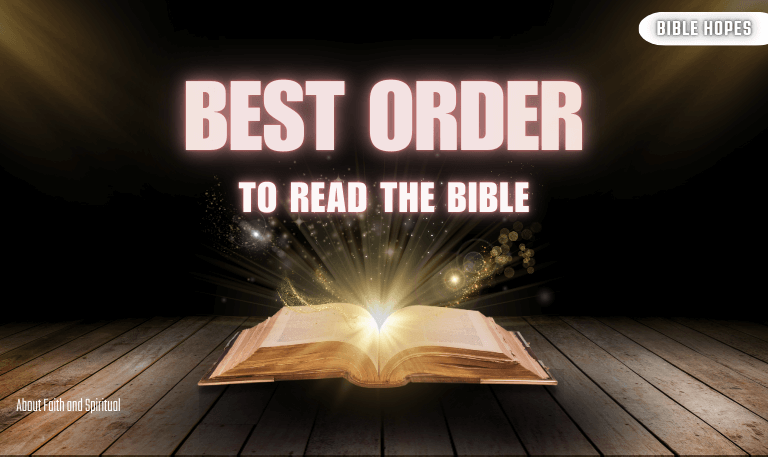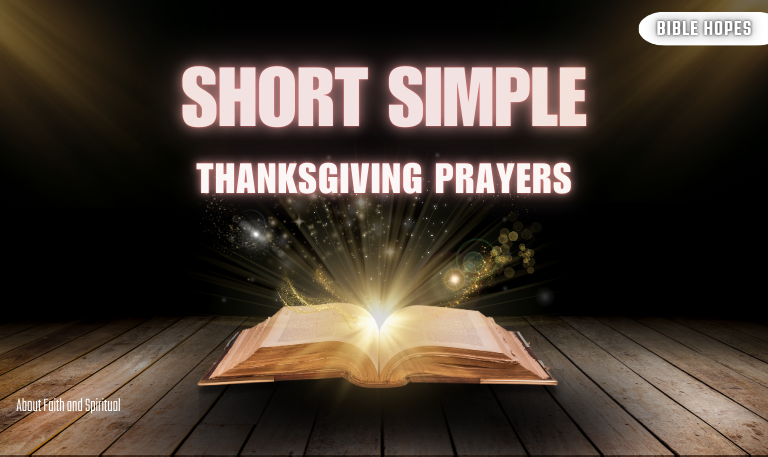Reading the Bible can be a deeply transformative experience, but for many, the sheer volume and complexity of its content can be overwhelming. With 66 books containing a diverse array of narratives, laws, prophecies, and wisdom, knowing where to start and how to read the Bible in a way that is both engaging and enlightening can make all the difference. This comprehensive guide will take you through the best order to read the Bible, whether you’re a beginner or a seasoned Christian looking to deepen your understanding.
Why Reading the Bible in Order Matters
Many people approach the Bible with the intention of gaining spiritual insight, but without a structured plan, it’s easy to get lost in its vastness. A Bible reading plan helps you stay focused, ensures you don’t miss important context, and makes your journey through the Scriptures more meaningful.
Before diving into specific reading orders, let’s briefly discuss why a structured Bible reading plan is so important:
- Avoids confusion: The Bible contains a wide range of genres—poetry, history, prophecy, letters—which require different approaches for effective comprehension.
- Deepens understanding: Reading in an intentional order allows you to build a comprehensive understanding of the Bible’s overarching themes.
- Promotes spiritual growth: A plan gives you consistent daily engagement with Scripture, helping you to grow in your faith.
Whether you’re looking for a chronological Bible reading plan or a thematic approach, this guide will outline the best ways to read the Bible for maximum spiritual benefit.
Read Also: Bible Scriptures on Walking With God
Why a Reading Plan is Essential
A reading plan offers several advantages over reading the Bible randomly. When you have a clear plan, you can:
Progress steadily: Avoid feeling overwhelmed by long books like the Old Testament’s Leviticus or Numbers by breaking them into manageable chunks.
Understand context: Reading from different sections of the Bible in a structured order allows you to appreciate historical, cultural, and theological context.
Stay consistent: A structured plan helps you stay motivated, encouraging daily reading and providing measurable progress.
Different Approaches to Reading the Bible
There are several methods you can use to structure your Bible reading. Some people prefer reading in chronological order, while others like starting with the Gospels or the Psalms. Below, we explore the best approaches based on various needs and interests.
1. Thematic Bible Reading Plan
If you’re particularly interested in understanding key themes like salvation, prayer, and faith, a thematic approach is an excellent choice. This method allows you to dive deep into specific topics without needing to follow the Bible’s narrative order.
Recommended Starting Themes:
Salvation: Start with books like John, Romans, and Ephesians.
Faith: Read Hebrews, James, and Romans.
Prayer: Psalms, Luke, and Matthew are great places to start.
A thematic reading plan can also integrate Bible study tools to provide in-depth explanations of key verses related to each theme.
2. Beginner-Friendly Reading Plan
For someone new to the Bible, starting with the Gospels is an ideal approach. The Gospels focus on the life of Jesus, which is central to the Christian faith. After the Gospels, you can move to Acts to understand the early church’s development.
Suggested Reading Order:
Gospels: Matthew, Mark, Luke, John
Acts: The early history of the church
Romans: Paul’s letter on salvation and grace
This reading plan will allow beginners to understand the core message of Christianity—Jesus’ life, death, and resurrection—before delving into the broader teachings of the Bible.
3. Chronological Bible Reading Plan
For those who want to understand the Bible in chronological order, this approach lays out the events of Scripture in the order they occurred, allowing you to see the unfolding narrative of God’s story. This is an especially valuable method for Bible students who want to grasp the historical flow of the Bible.
Books to Start With:
Genesis (the beginning of creation and early history)
Job (may have taken place during the time of the patriarchs)
Exodus (God’s deliverance of Israel)
Continue through the historical books like Samuel, Kings, and Chronicles.
Using a chronological Bible (or a Bible that already arranges the books in historical order) can be particularly helpful for readers aiming for a seamless understanding of the timeline.
Read Also: Bible Verses About Healing
4. Start with Psalms and Proverbs for Daily Wisdom
If you’re looking to enrich your daily devotional life, reading Psalms and Proverbs is an excellent place to start. These books contain poetry and wisdom literature that are easy to digest in short daily readings.
Psalms: Prayer, worship, and reflection
Proverbs: Practical wisdom for daily living
These books provide uplifting guidance and can be a great daily source of meditation and encouragement. Psalms offers a beautiful connection to God’s majesty, while Proverbs offers timeless wisdom.
5. Read the Bible from Genesis to Revelation
For a more traditional approach, some prefer reading the Bible in a straightforward manner—from Genesis to Revelation. This approach provides a full understanding of the Bible’s narrative, but it can be more challenging to navigate, especially for beginners. It’s best suited for those who want to experience the Bible as a complete story, from creation to the prophecy of the new heaven and new earth.
Reading Order:
Genesis: The creation story and the early patriarchs
Exodus: The formation of Israel
Gospels: The life of Jesus
Revelation: The end times prophecy
This method is the most comprehensive and allows for a deep dive into every section of the Bible, but it may require patience, especially through the more challenging books of law and prophecy.
6. The Epistles and Letters
After reading through the Gospels and Acts, many turn to the Epistles (letters), which provide teachings on Christian living. The letters of Paul, Peter, and John give practical advice on faith, love, salvation, and church life.
Suggested Epistles to Read:
Romans: A foundational letter on salvation and grace
1 Corinthians: Church life and Christian conduct
Ephesians: The armor of God and the body of Christ
These letters are often highly practical, addressing the challenges of Christian living.
Read Also: Bible Verses for Women
7. Old Testament Wisdom Literature
The Old Testament contains beautiful wisdom literature that helps you understand God’s perspective on human life, suffering, and virtue.
Books to Include:
Job: A profound exploration of suffering and divine sovereignty
Proverbs: Practical wisdom for daily living
Ecclesiastes: Reflections on life’s purpose
This literature can be enriching for your devotional life and provides profound insights into how to live wisely in a fallen world.
8. Reading the Prophets
The Prophetic Books in the Old Testament are both challenging and rewarding. These books contain God’s messages to Israel and Judah, warning them of their sin and offering hope for redemption.
Major Prophets to Consider:
Isaiah: Prophecies of judgment and restoration
Jeremiah: The lamentations of a prophet
Ezekiel: Prophecies of hope and renewal
These books can be difficult to read, but they contain powerful insights into God’s heart for His people and His plans for the world.
Key Bible Books to Start With
The Gospels: The Foundation of Christian Belief
As mentioned earlier, starting with the Gospels is a great way to begin your journey through the Bible. These books—Matthew, Mark, Luke, and John—tell the story of Jesus Christ, His teachings, His miracles, and His death and resurrection.
Read Also: Biblical Qualities of a Good Husband
Acts of the Apostles: The Birth of the Church
After you’ve read the Gospels, the Acts of the Apostles gives insight into the early church, how the disciples spread the Gospel, and the challenges they faced in doing so. This book is essential for understanding how the message of Jesus reached the rest of the world.
Best Order to Read the Bible FAQs
Q: What is the best Bible reading plan for beginners?
A: For beginners, the best Bible reading plan is to start with the Gospels (Matthew, Mark, Luke, and John). This gives a foundational understanding of the life and teachings of Jesus, which is the core of the Christian faith. Afterward, you can move on to Acts and the letters of Paul.
Q: Can I read the Bible in any order?
A: Yes, you can read the Bible in any order, but starting with a structured plan will help you understand its context better. If you choose a chronological Bible reading plan or a thematic approach, it will provide a more coherent experience.
Q: Should I read the Bible every day?
A: Yes, reading the Bible every day helps establish consistency and spiritual discipline. Even short, daily readings can provide great insight, especially if you use devotionals or reflection tools alongside your reading.
Q: How do I stay motivated in my Bible reading?
A: Staying motivated in Bible reading can be challenging, but setting a daily routine, joining a Bible study group, and using Bible apps with reminders can help keep you on track.
Q: Can I skip parts of the Bible if they are difficult to understand?
A: While it’s okay to skip certain passages temporarily, it’s important to come back to them later. Using Bible study resources such as commentaries, apps, and devotionals can help you understand difficult passages.
Conclusion
The best order to read the Bible is not one-size-fits-all. The key is to choose a reading plan that aligns with your spiritual goals and needs. Whether you follow a chronological reading plan, start with the Gospels, or dive into thematic study, the most important thing is to approach your Bible reading with an open heart, allowing God to speak to you through His Word.

![Tuesday Blessings Prayers For Health & Protection [2025] 3 Tuesday-Blessings-Prayers-For-Health-&-Protection-[2025]](https://biblehopes.com/wp-content/uploads/2025/04/Tuesday-Blessings-Prayers-For-Health-Protection-2025.png)
![17 Bible Quotes About Success Motivational [2025 Guide] 4 17-Bible-Quotes-About-Success-Motivational-[2025-Guide]](https://biblehopes.com/wp-content/uploads/2025/04/17-Bible-Quotes-About-Success-Motivational-2025-Guide.png)
